Speakers
[collapsibles]
[collapse title=”Prof. Andrea Maier”]
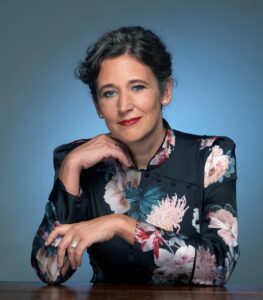
Medical research has traditionally focused on disease mechanisms and therapies to restore health. This approach has been highly effective, but because of its effectiveness, demographics of countries are changing. Chronologic age is the largest risk factor for decline in organ function and for age-related diseases, which are now highly prevalent. Therewith, healthcare costs are steadily increasing and the gap between healthspan, the duration an individual maintains good health, and lifespan is escalating. Hallmarks of ageing, e.g. cellular senescence, are mechanisms driving ageing. Understanding the epidemiology of cellular senescence and the possible effect of senolytic interventions is crucial for its implementation in Longevity Medicine. Longevity Medicine is optimizing healthspan by targeting ageing processes across the lifespan. Therefore, cutting edge evidence-based diagnostics and interventions are needed to be implemented into healthcare, to address the challenges of an ageing society.
Andrea Maier is Professor in Medicine and Healthy Ageing at the National University of Singapore.
[/collapse]
[collapse title=”Prof. Jan Hoeijmakers”]
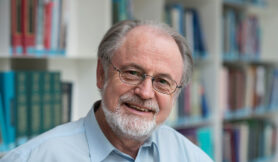 Aging appears remarkably plastic: e.g. suppressing insulin signalling extends lifespan in numerous species. However, virtually all premature aging syndromes link with genome instability. We have generated mouse models which strikingly mimic human DNA-repair-deficiency syndromes and display wide-spread accelerated aging. For instance, Ercc1∆/- mice, carrying multiple repair defects show multi-morbidity, limiting lifespan to 4-6 month. Simultaneously, they exhibit an anti-aging ‘survival response’, which suppresses growth and enhances maintenance, resembling the longevity response induced by dietary restriction (DR) as an attempt to delay the accelerated aging. Interestingly, subjecting these progeroid mutants to actual (30%) DR tripled lifespan, and drastically retarded accelerated aging, most notably neurodegeneration preserving 50% more neurons and maintaining full motoric function. The DR response in these mice resembled DR in wild type animals including reduced insulin signaling and reduced DNA damage load, explaining why DNA repair mutants overrespond to DR. Interestingly, Ercc1∆/- liver gene expression profiles showed gradual decline of expression preferentially of long genes, consistent with genome-wide accumulation of stochastic, transcription-blocking lesions, which affect long genes more than short ones. This phenomenon was also discovered in normal aging of post-mitotic tissues. DR largely prevented transcription stress, indicating that DR prolongs genome function. We will present phenotypes of conditional DNA repair models targeting aging to selected organs, striking parallels with Alzheimer’s disease and the first remarkable results translating these concepts from mice to progeroid children. Our findings identify DNA damage as main cause of aging, establish repair-deficient mice as powerful models for interventions to promote healthy aging, reveal untapped potential for reducing endogenous damage and transcription stress in neurodegeneration, explain the molecular anti-aging mechanism of DR and the aging component of proteinopathies based on transcription stress and promote a counterintuitive DR-like interventions for progeroid syndromes, preventing neurodegenerative diseases and ischemia reperfusion damage in surgery and for improving chemotherapy outcome.
Aging appears remarkably plastic: e.g. suppressing insulin signalling extends lifespan in numerous species. However, virtually all premature aging syndromes link with genome instability. We have generated mouse models which strikingly mimic human DNA-repair-deficiency syndromes and display wide-spread accelerated aging. For instance, Ercc1∆/- mice, carrying multiple repair defects show multi-morbidity, limiting lifespan to 4-6 month. Simultaneously, they exhibit an anti-aging ‘survival response’, which suppresses growth and enhances maintenance, resembling the longevity response induced by dietary restriction (DR) as an attempt to delay the accelerated aging. Interestingly, subjecting these progeroid mutants to actual (30%) DR tripled lifespan, and drastically retarded accelerated aging, most notably neurodegeneration preserving 50% more neurons and maintaining full motoric function. The DR response in these mice resembled DR in wild type animals including reduced insulin signaling and reduced DNA damage load, explaining why DNA repair mutants overrespond to DR. Interestingly, Ercc1∆/- liver gene expression profiles showed gradual decline of expression preferentially of long genes, consistent with genome-wide accumulation of stochastic, transcription-blocking lesions, which affect long genes more than short ones. This phenomenon was also discovered in normal aging of post-mitotic tissues. DR largely prevented transcription stress, indicating that DR prolongs genome function. We will present phenotypes of conditional DNA repair models targeting aging to selected organs, striking parallels with Alzheimer’s disease and the first remarkable results translating these concepts from mice to progeroid children. Our findings identify DNA damage as main cause of aging, establish repair-deficient mice as powerful models for interventions to promote healthy aging, reveal untapped potential for reducing endogenous damage and transcription stress in neurodegeneration, explain the molecular anti-aging mechanism of DR and the aging component of proteinopathies based on transcription stress and promote a counterintuitive DR-like interventions for progeroid syndromes, preventing neurodegenerative diseases and ischemia reperfusion damage in surgery and for improving chemotherapy outcome.
Research of Jan Hoeijmakers focuses on DNA repair and the impact of nutrition on cancer and aging. His team made major contributions to cloning human repair genes, elucidating underlying mechanisms, and generating numerous mouse mutants mimicking rare human repair syndromes. He discovered that accumulating DNA damage causes transcription stress and aging but at the same time triggers a potent anti-aging ‘survival’ response, that resembles calorie restriction (CR). Applying 30% CR dramatically delayed accelerated aging in mouse repair mutants by reducing DNA damage and its sequelae, explaining the anti-aging, anti-cancer mechanism of CR. Translation to the first progeroid DNA repair patients even surpassed the enormous benefits in mice, revising nutritional guidelines for these syndromes. These clinical implications extend to counteracting neurodegeneration, side effects of chemo/radiotherapy, and surgery-related ischemia reperfusion injury. Currently research on the underlying molecular mechanisms is combined with clinical trials on the effect of short-term fasting as nutritional preconditioning for (oncological) surgery and chemotherapy to improve quality of life of (ex)cancer patients. Jan Hoeijmakers heads research teams in the Erasmus Medical Center (Rotterdam), Princess Máxima Center for Pediatric Oncology (Utrecht), and CECAD (Cologne). For his scientific achievements he has obtained numerous (inter)national awards and distinctions.
Jan H.J. Hoeijmakers, Dept. of Molec. Genetics, Erasmus MC, Rotterdam, The Netherlands, Cecad Research Center, Cologne, Germany and the Princess Máxima Center for Pediatric Oncology, Oncode, Utrecht, The Netherlands
[/collapse]
[collapse title=”Dr. Elisa Chisari”]
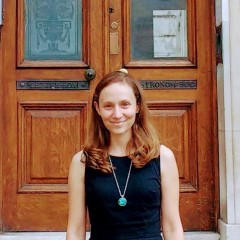 I study the composition and evolution of the Universe using galaxies as particles in an enormous laboratory. 95% of the energy and matter in our Universe is missing. We think it is comprised of two main elements: dark energy (an unidentified source of energy making the Universe expand) and dark matter ( an unidentified source of matter allowing galaxies to form). I am interested in understanding the nature of these components. The methods I use involve mapping millions of galaxies across the night sky and developing mathematical models to compare them to. One of my main interests is in developing models for the shapes of galaxies (how round they are, in which direction they point). This is influenced by gravity, which allows me to make a connection between the observed shape and the models of the Universe.
I study the composition and evolution of the Universe using galaxies as particles in an enormous laboratory. 95% of the energy and matter in our Universe is missing. We think it is comprised of two main elements: dark energy (an unidentified source of energy making the Universe expand) and dark matter ( an unidentified source of matter allowing galaxies to form). I am interested in understanding the nature of these components. The methods I use involve mapping millions of galaxies across the night sky and developing mathematical models to compare them to. One of my main interests is in developing models for the shapes of galaxies (how round they are, in which direction they point). This is influenced by gravity, which allows me to make a connection between the observed shape and the models of the Universe.
Elisa Chisari is Assistant Professor at the Institute for Theoretical Physics, Utrecht University.
[/collapse]
[collapse title=”Prof. Harro A.J. Meijer”]
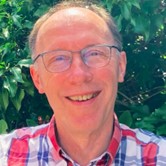
Radiocarbon (“C-14 dating”) is well known for its ability to date older, archaeological materials, with sometimes stunning results. Less well-known is the fact that it can also be used to accurately date, to almost the exact year, materials from the last decades. This is “thanks” to the above ground nuclear bomb tests that have taken place in the 1950’s and 1960’s.
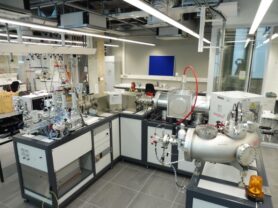
I will show examples of the use of radiocarbon. In addition I will show how radiocarbon can be used to track fossil fuel use from atmospheric CO2, and that radiocarbon is the only way to tell the difference between biomaterials and materials based on fossil fuels.
Harro Meijer is part of the centre for Isotope Research (CIO), Energy and Sustainability Institute Groningen (ESRIG) at University of Groningen
[/collapse]
[collapse title=”Prof. José Borghans”]
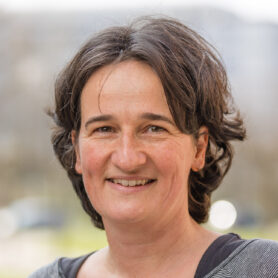
Our major research line encompasses the quantification of leukocyte dynamics. Despite enormous advances in the field of immunology, many fundamental, quantitative insights are still lacking, including the expected lifespan of different types of leukocytes, the contribution of thymus and bone marrow output to leukocyte homeostasis, and changes in lymphocyte diversity during ageing. This lack of information hampers our understanding of the immunological changes that occur during healthy ageing, and in different diseases.
Interdisciplinary approach
Our research group aims to reveal such quantitative insights by taking an interdisciplinary approach, by combining experimental work with mathematical analyses. Experimental immunologists and mathematicians are working together on a daily basis, ensuring a permanent dialogue between the two. Using different labelling strategies, including in vivo stable isotope labelling, we study the daily production rates of different types of leukocytes, how they are maintained during healthy ageing, and how these processes are disturbed in diseases such as leukemia, HIV infection, and after haematopoietic stem-cell transplantation.
Mice and men
Our quantitative approach has pointed out that T-cell maintenance occurs fundamentally differently in laboratory mice and humans. While in mice, naive T-cell maintenance is fully dependent on thymic output, in humans it is almost entirely due to peripheral T-cell proliferation. These differences underline the need for -and hence our focus on- in vivo studies in humans. Since research in humans naturally has its limitations, we also study leukocyte dynamics in wildling mice, a mouse model that is more natural than the typical laboratory mouse, because these mice are born to wild mice, and hence carry a natural microbiome.
Leukocyte dynamics throughout the body
Unfortunately, current insights into the human immune system are almost exclusively based on cells from the blood, a place where only a minority of immune cells reside. Most memory T-cells reside in bone marrow and non-lymphoid tissues, where they are responsible for efficient removal of previously encountered pathogens, but also cause chronic inflammatory diseases. Extremely little is known about the dynamic properties and long-term maintenance of these cells. As a result, several burning questions remain unresolved: What are the best memory T-cell subsets to transfer in cancer therapy? Should therapies against unwanted T-cell responses in the skin or gut target T-cell proliferation or migration? Which T-cell subsets should be targeted by novel vaccination strategies?
The maths of memory
We aim to fill this knowledge gap and unravel how long-term immunological memory is maintained by T lymphocytes throughout the body. We do this by quantifying the in vivo dynamics and lineage relationships of different memory T-cell subsets in the blood, bone-marrow, and lymphoid and non-lymphoid tissues of humans and wildling mice, to ensure optimal translation to future therapeutic applications. With this knowledge, we aim to lay the basis for the optimal design of immune therapies against cancer, treatment of chronic inflammatory diseases, and development of novel vaccination strategies.
José Borghans is Professor of Quantitative Immunology at the University Medical Center (UMC) Utrecht.
[/collapse]

